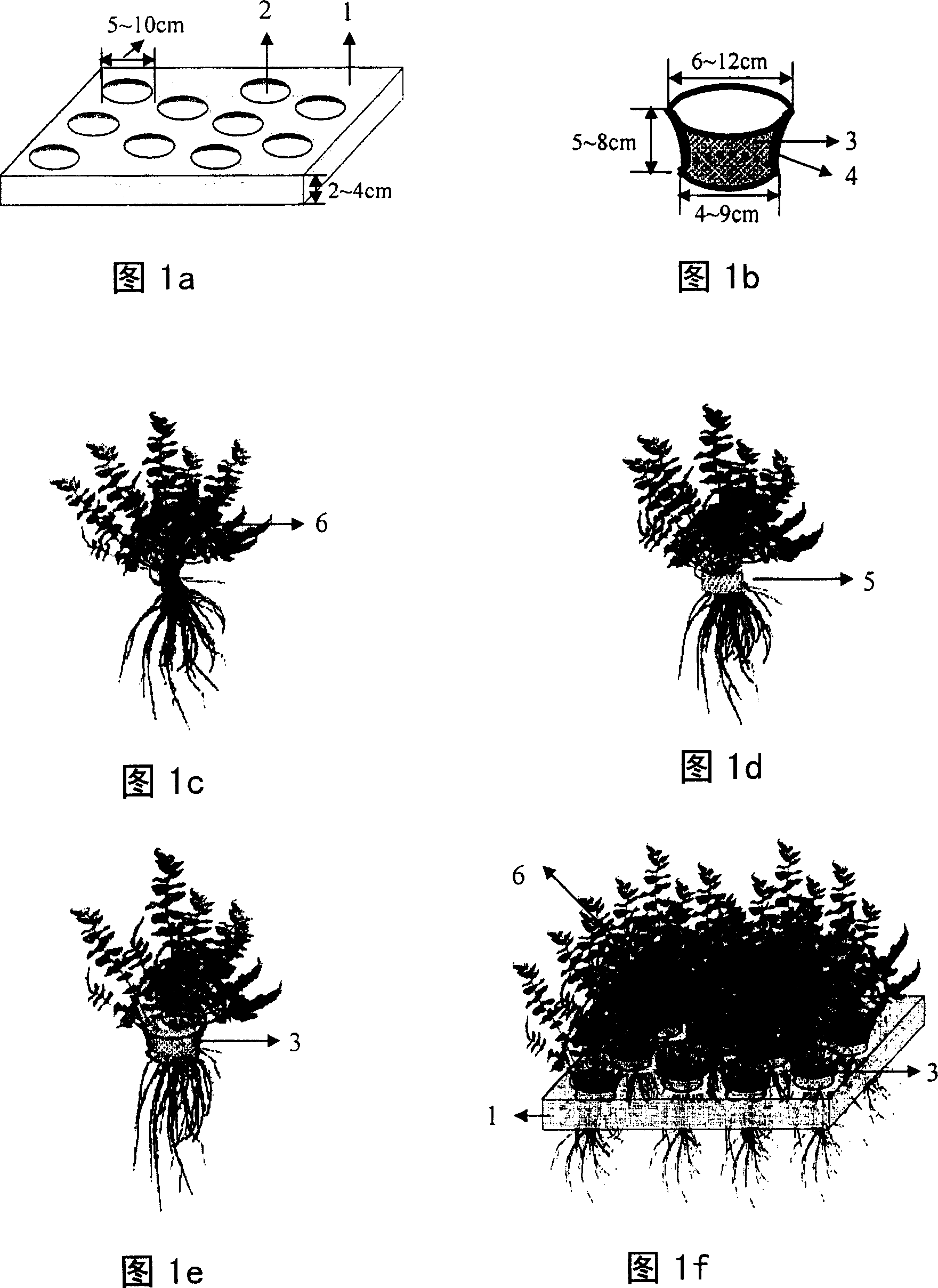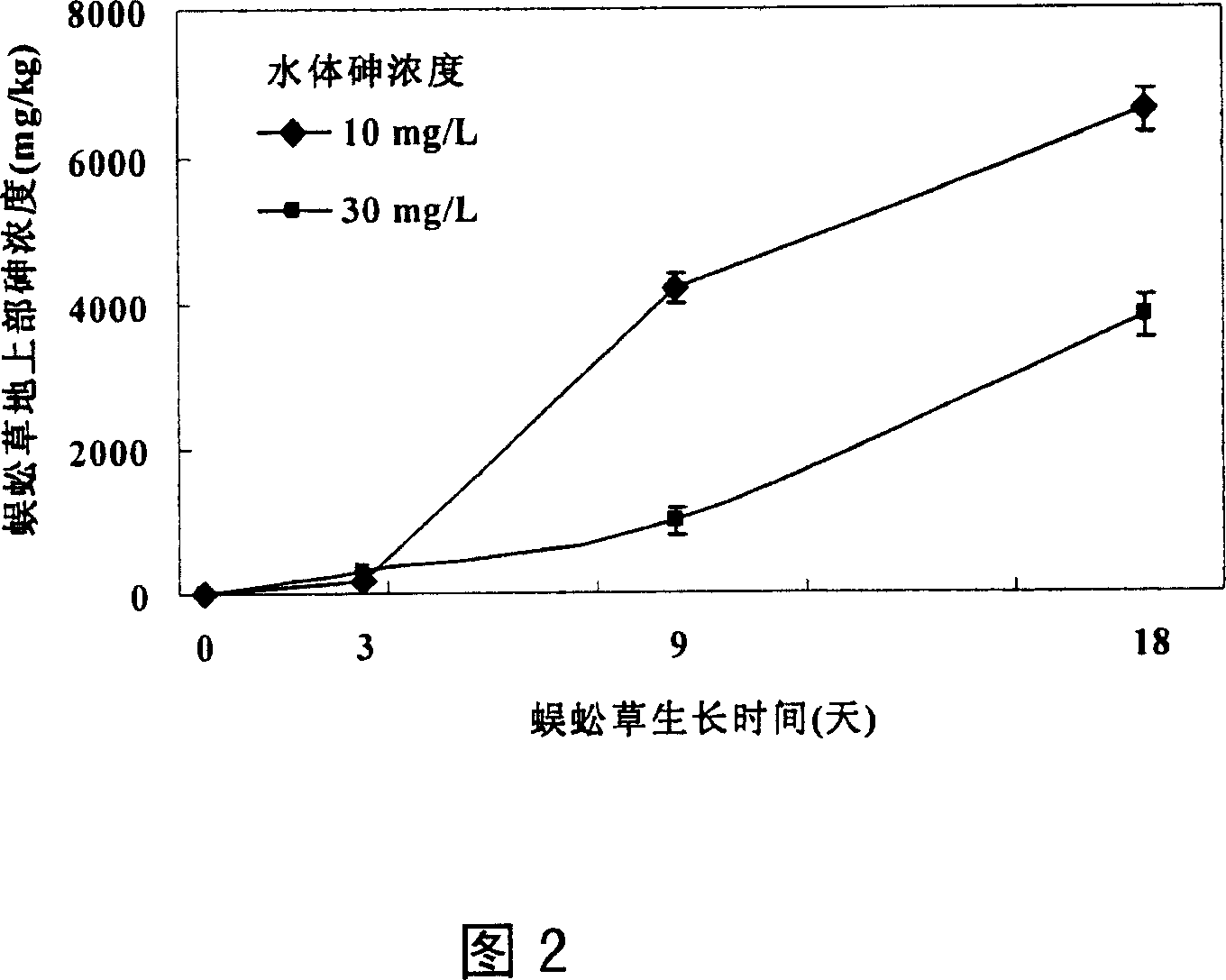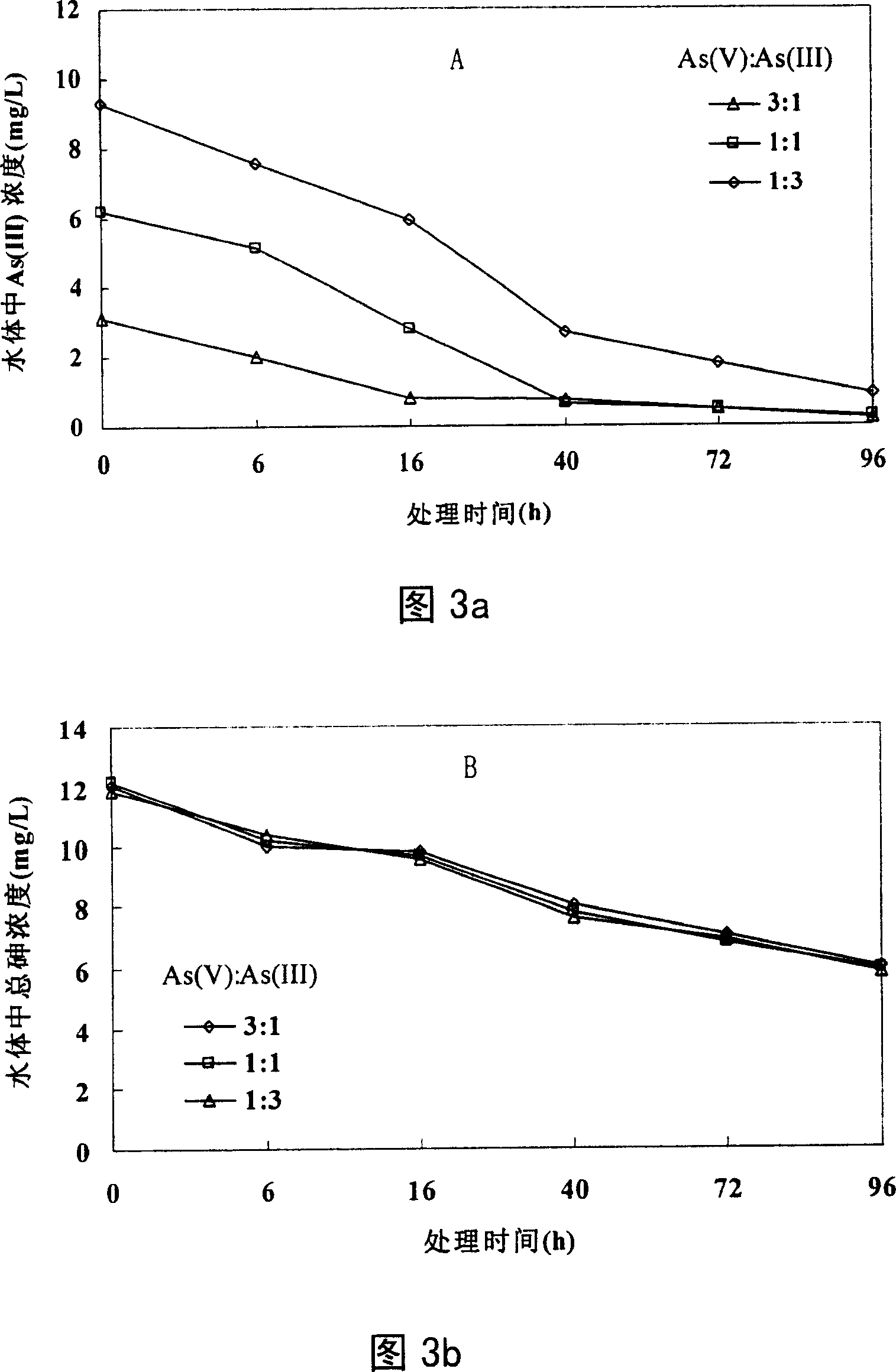Method and apparatus for repairing plant in water polluted by arsenic
A restoration method and phytoremediation technology, applied in chemical instruments and methods, biological water/sewage treatment, water/sludge/sewage treatment, etc. Beneficial for root growth
- Summary
- Abstract
- Description
- Claims
- Application Information
AI Technical Summary
Problems solved by technology
Method used
Image
Examples
Embodiment 1
[0040] Example 1: Artificially prepare arsenic-containing solutions of different concentrations, As is represented by Na 2 HASO 4 Add in the form of arsenic, set two concentration levels: 10 and 30mg / L, adjust the pH of the arsenic-containing solution to 6.0±0.1 with NaOH or HCl. Plants with consistent height and growth were selected from the pre-cultivated Centipede Grass 6 and planted in the prepared arsenic-containing water according to the experimental method and device described in the article. In the greenhouse, the light is 14h per day, and the light intensity is 450μE·m -2 ·s -1 , the day and night temperatures are 23-25°C / 20-22°C respectively, and the humidity in the greenhouse is controlled at about 50%. The concentration of arsenic in the shoots of Centipedegrass 6 was measured on days 0, 3, 9, and 18, and repeated three times. It can be seen from Figure 2 that Centipedegrass 6 has a very strong ability to absorb arsenic. After growing in aqueous solution for 3 ...
Embodiment 2
[0041] Example 2: The concentration of arsenic in the polluted water body is 1 mg / L, and the source and planting conditions of the 6 plants of Centipede Grass are the same as those in Example 1. Plants with consistent height and growth were selected to be floated and planted in 10L of water according to the device described in the text. After Centipedegrass 6 grew for 30 days, the concentration of arsenic in the pinnae, petiole and root of the plant was measured respectively. It is found that the arsenic enrichment ability of each part is in the form of pinnae > petiole > root, the highest concentration of arsenic in pinnae can reach 4366mg / kg, the average concentration of root is 394mg / kg, and 6 shoots of centipede grass in each planting hole The cumulative amount of arsenic can reach 1.0 mg on average. It shows that Centipedegrass 6 can absorb a large amount of arsenic in polluted water and transfer it to the shoot. After 30 days of planting, the arsenic concentration in t...
Embodiment 3
[0042] Embodiment three: set to add As(V)(Na 2 HASO 4 ) or As(III)(NaAsO 2 ) two forms of arsenic, so that the concentration of arsenic in the nutrient solution reaches 10mg / L. The source and planting conditions of Centipede Grass 6 plants are identical with embodiment one. The plants of Centipede Grass 6 were transplanted into the device described in the article, and the nutrient solution was changed every 3 days during the cultivation process to maintain the concentration and form of arsenic. After 30 days, the arsenic concentrations in the shoots and roots of the plants were measured respectively. As a result, it was found that the accumulations of As(V) and As(III) in the shoots of Centipedegrass 6 were 1.4 and 1.3 mg / plant on average, and the accumulations of As(V) and As(III) in the roots were both 0.05 mg / plant or so. It shows that Centipedegrass 6 has a strong enrichment function for As(V) or As(III).
PUM
| Property | Measurement | Unit |
|---|---|---|
| distance | aaaaa | aaaaa |
| diameter | aaaaa | aaaaa |
| height | aaaaa | aaaaa |
Abstract
Description
Claims
Application Information
 Login to View More
Login to View More - R&D
- Intellectual Property
- Life Sciences
- Materials
- Tech Scout
- Unparalleled Data Quality
- Higher Quality Content
- 60% Fewer Hallucinations
Browse by: Latest US Patents, China's latest patents, Technical Efficacy Thesaurus, Application Domain, Technology Topic, Popular Technical Reports.
© 2025 PatSnap. All rights reserved.Legal|Privacy policy|Modern Slavery Act Transparency Statement|Sitemap|About US| Contact US: help@patsnap.com



